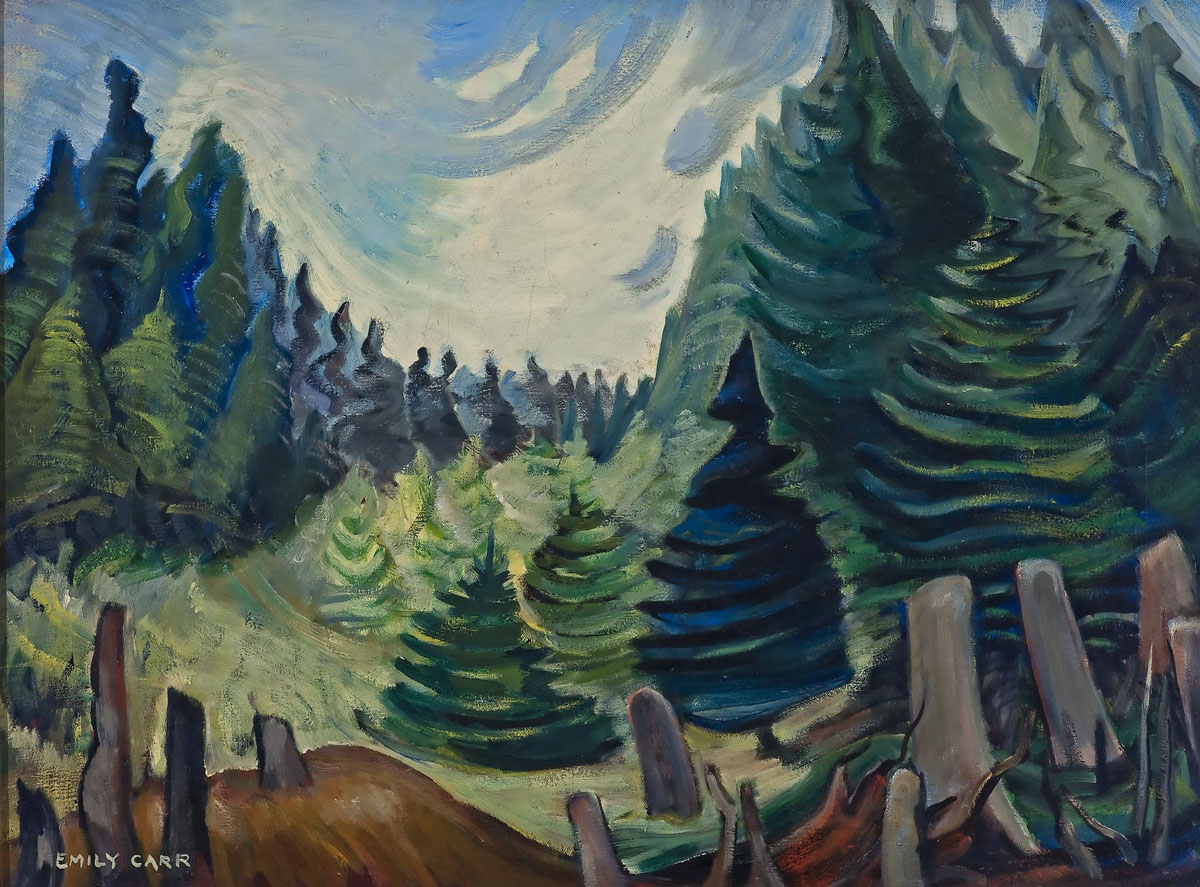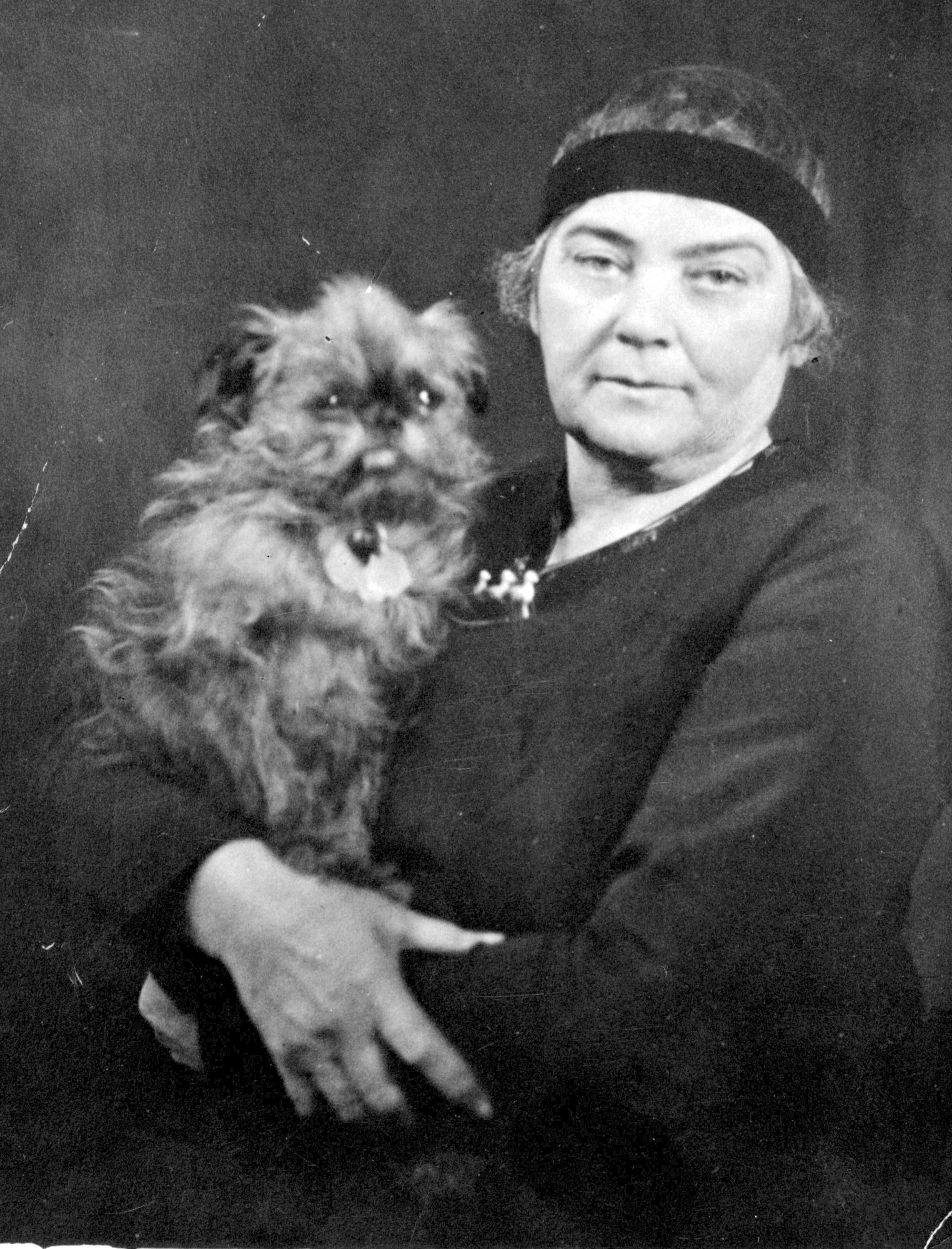Emily Carr was a Canadian artist and writer heavily inspired by the Indigenous peoples of the Pacific Northwest coast. One of the first painters in Canada to adopt a Modernist and Post-Impressionist painting style, Carr did not receive widespread recognition for her work until late in her life. As she matured, the subject matter of her painting shifted from aboriginal themes to landscapes, forest scenes in particular. As a writer, Carr was one of the earliest chroniclers of life in British Columbia.
Although influenced by the Group of Seven, especially Lawren Harris, Carr developed a unique style of landscape painting that sets her apart from her contemporaries. Drawn initially to West Coast First Nations’ villages and totem poles for her subjects, in the 1930s Carr increasingly depicted the uninhabited landscape. Metchosin, the name of a district on Vancouver Island, includes two phenomena central to her practice: forest and sky. For Carr, nature was imbued with the divine, an idea communicated by representing trees as if they are reaching toward and swirling into the sky. Literally entwined with itself, Carr’s natural world is represented through a series of undulating movements, not a collection of static objects.




Metchosin
oil on canvas • 50.7 x 58.7 cm
 Emily Carr
Emily Carr